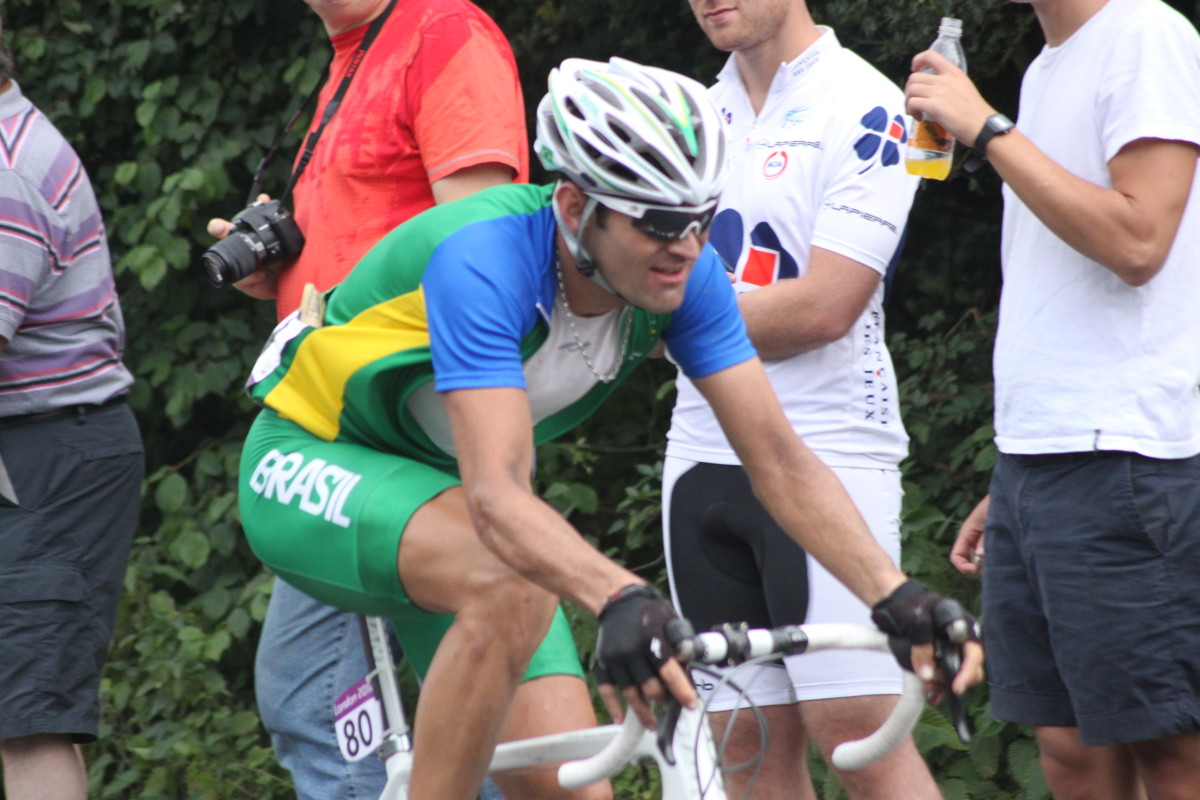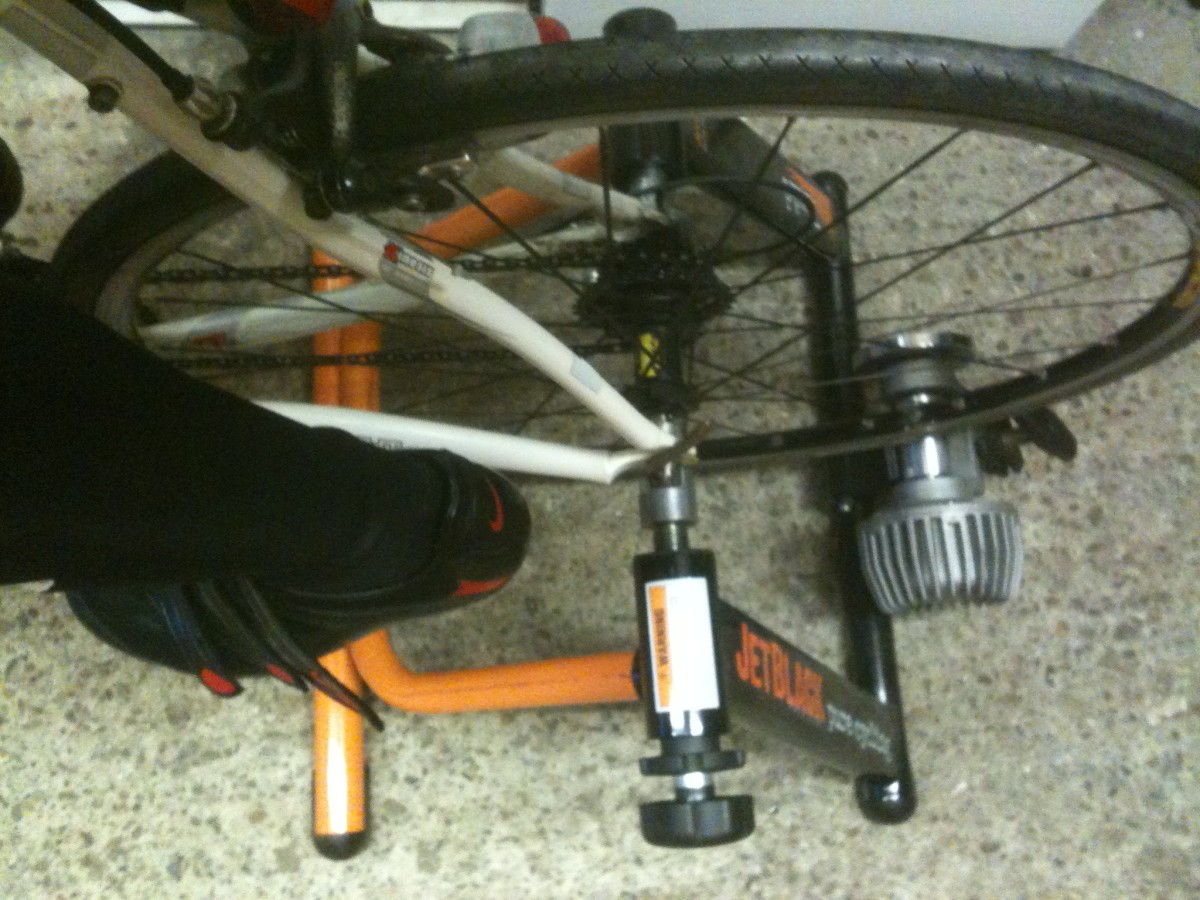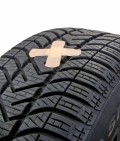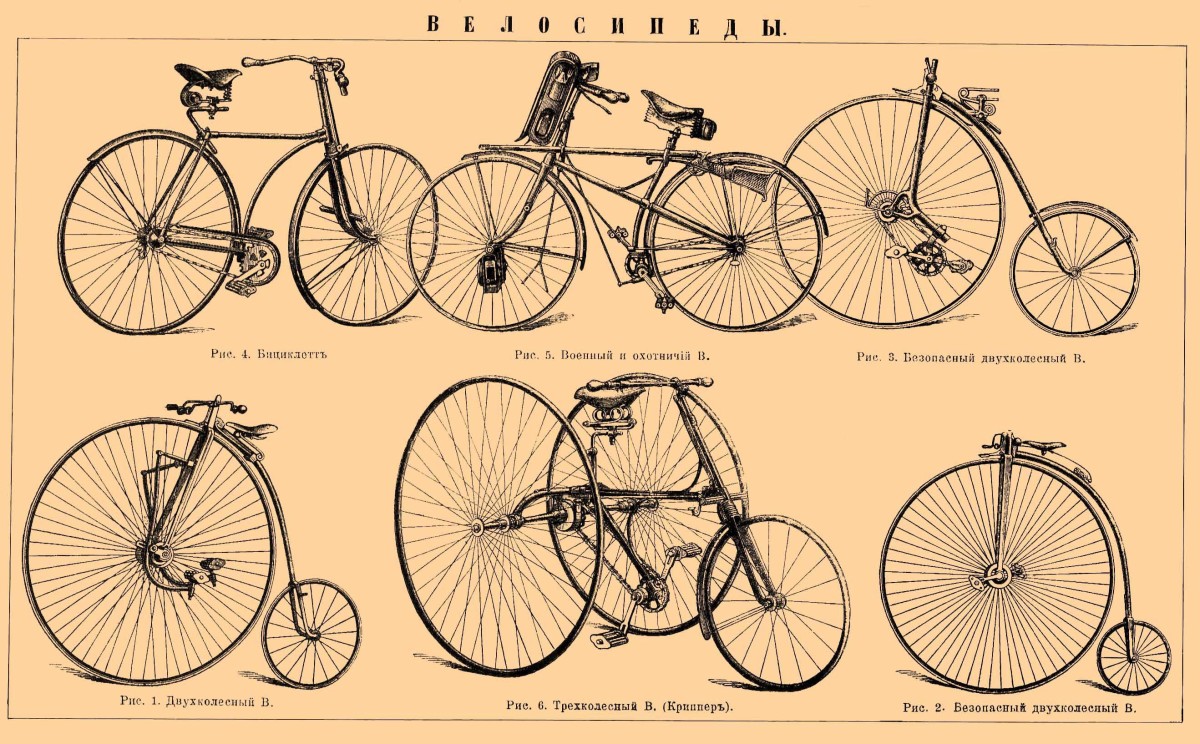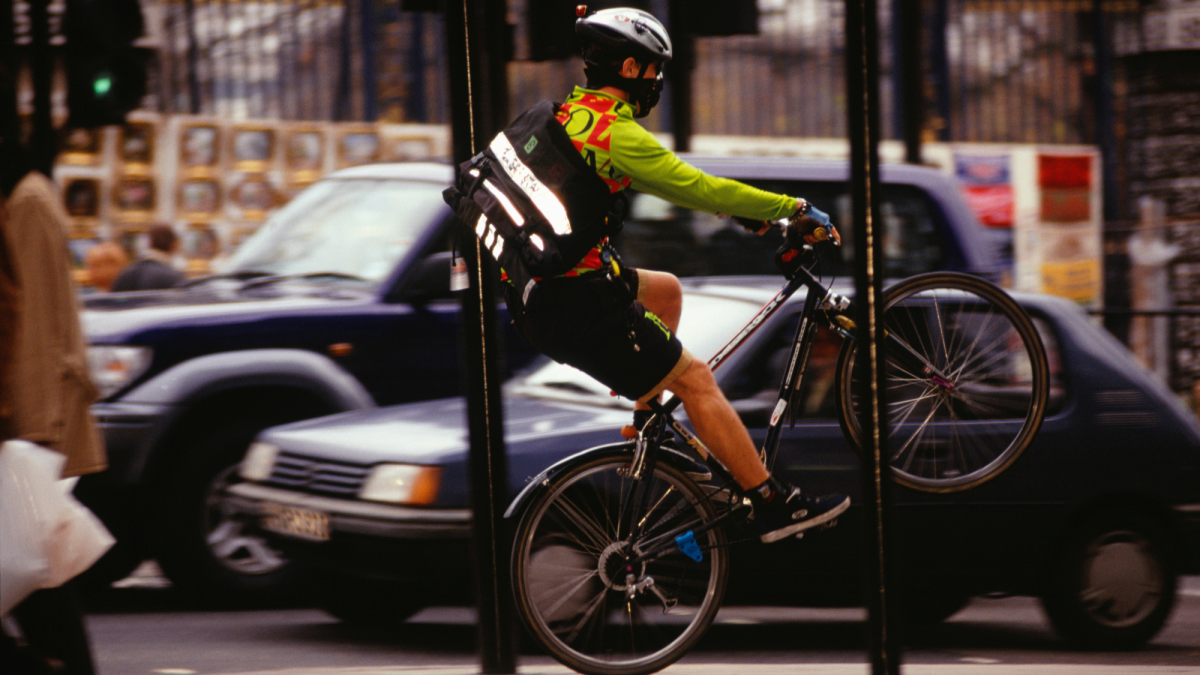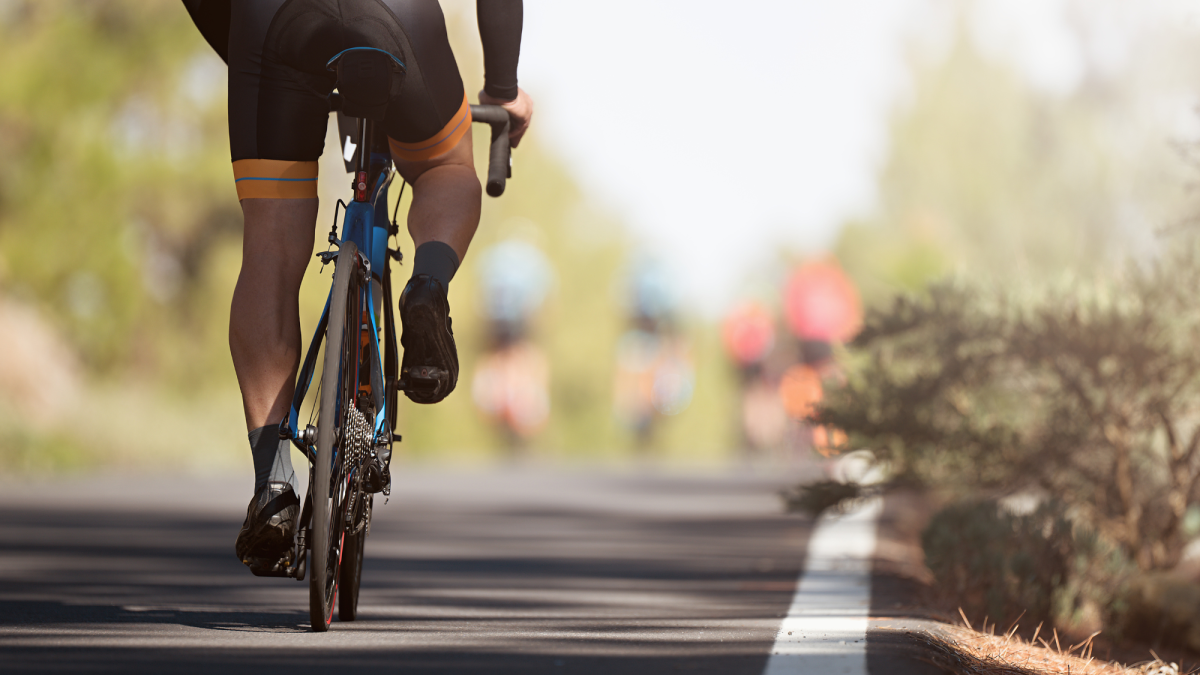How to prepare for a Bicycle Ride: Fix a Flat and more.
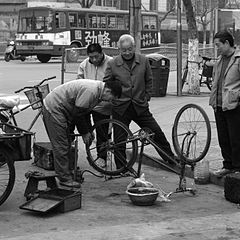
Be Prepared
Though we wish we could prevent all problems while riding, we know we can't. The best way to avoid having as many mechanical problems while riding is to regularly check over your bicycle. As a good recommendation, go through the following pre-ride check-up:
- Squeeze the brakes and then proceed to rock the bike back and forth to make sure the brakes and the bicycles headset are still tight.
- Make sure you brake levers don't touch the handle bars when you squeeze them as tight as possible. If they do, you are losing braking power and should tighten them up using the barrel adjuster located either by the brake lever or where the cable meets the brake calipers.
- Move the handle bars side to side, listening for any noises that don't sound "normal"
- Check you cables, both the brake and shift, for any fraying.
- Check to see if the pedals are still attached firmly to the crank arms.
- Though you don't need to lube you chain every ride, if the chain is blackened then add a few drops to the chain and then proceed to wipe it down with a rag.
- Quickly check the tread of each tire for any debris, cuts, blisters or exposed threads.
- Check tire pressure and ensure that each tire is inflated to the recommend range located on the tire's sidewall.
- If you use clipless pedals, make sure all your bolts are still fastened tightly.
If you notice anything seems fishy and needs to be fixed, either fix it yourself (if you know how and have the tools) or take it to your local bike shop.
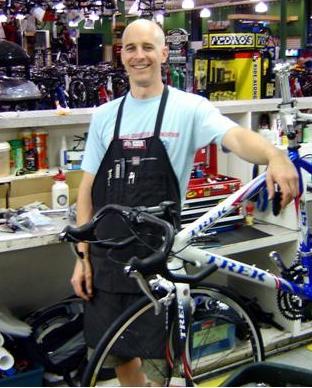
Essential For the Ride
Before venturing off on your bike to fend for yourself against the road, make sure you have everything you need and can carry for emergency bicycle repairs.
- A Spare tube for flats, just fold it up and keep it in a seat bag or your pocket
- A Patch Kit with glue that it still loose and not dried up
- Tire levers to remove your tire
- A Frame pump or co2 inflation system to re-inflate your tires
- A Multi-tool containin at least a 4mm, 5mm, 6mm Allen wrench, a flat head and Philips head screwdriver.
Changing a Flat Tire
Road bikes or mountain bikes, everyone gets a flat tire sooner or later. The good news is that changing a flat tire is a simple skill to master and one anyone can do easily on the road or trail.
- When you notice a flat, safely go to the side of the road or trail and select a spot where you can easily see traffic or other dangers coming at you.
- If you're rear tire is flat shift your chain to the largest chain ring in the front and smallest in the rear.
- Do your best to empty all remaining air from the tube.
- Remove you wheel, either using the quick release levers or loosening the nuts on the axle.
- Disengage you brakes using either the quick release knob(road bikes) or by removing the noodle end from the the slot. Bikes with disc brakes do not need to be loosened.
- Once the wheel is removed, gently place you bike on its left side with the drive trail facing the sky. This will ensure you don't bend or brake any of the most important parts.
- Remove the tire, either use the brute force you can muster up or insert the flat end of a tire lever and pry a section of the tire off the rim wall, then hook the other end to one of the spokes. Go at least two spokes further from that tire lever and insert the next tire lever, only this time continue to slide the tire lever around the rim until the tire is off the rim wall.
- Inspect the tube for where the flat came from (do not try to repair the tube, be smart and safe and just replace it), check the inside of the tire for any debris that may have made its way into the tire, do the same for the outside. Lastly check the inside of the rim for spokes poking through the rim strip of bends in the rim strip.
- Once you have check for the reason for the flat and fixed it, put one side of the tire back on the rim
- Lightly inflate the tube, just enough so that it take shape. Place the valve stems into the hole first and continue to put the tub in place.
- Starting at the valve stem, continue to roll the bead of the tire back onto the rim. Use the ball of your hand to move it into place
- With the tire and tube now installed, check to ensure the tube and tire is seated properly by pulling the tire from side to side along the rim, checking that the tube isn't rolled under the bead of the tire.
- Gently Inflate the tire back up using your pump or co2 system checking to make sure the tube is properly seating along the way. Continue until you expel your co2 or you have pumped your tire back up firmly using your pump
- Make sure that when you put you wheel back on that you re-tighten you brakes and the skewers or axle nuts
If you want to make sure you understand how to change a flat after reading this, just stop by your local bike shop or ask a fellow cyclist for help.

Tips & Tricks
- Practice changing a flat tire at your home, this will ensure you can do so easily when you need to on your ride.
- Do not put the bike upside down on its handle bars and seat, this can cause the chain to get tangled. Your hands will then get covered in black grease.
- Get tire levers and avoid using a screw drive at all costs. You can damage the rim and ruin a tire that is perfectly salvageable.
- Don't use air hoses at gas stations, they're made to inflate car tires, not tiny bicycle tire. They can quickly and easily blow your tube.
- Carry anything you will need for a medical emergency, photo id or a cell phone (to dial 911 or call for a ride)
You crashed, now what?
If you've ever watched a professional bike race, you will notice that even the people who make a living being a bicycle rider crash. You'll also notice they wear a helmet, it's not unfashionable to wear one, but it sure is unfashionable to be the idiot who didn't wear one and now has brain damage (or died on impact).
I know what you are thinking, "I don't plan on crashing.", that may be so but you should at least know what to do and look for in the event you do. When in doubt always ask for help, especially if you are riding with other people. If you crash and don't need to seek emergency medical help follow these steps. Otherwise go to the hospital.
- Check yourself over, look for cuts and minor injuries. Treat yourself as much as possible. If you can clean any cuts and scrapes with the water you are carrying. If you have no water, saliva though gross is better than nothing.
- If you are bleeding badly, apply pressure and try to aid the cut in clotting. If bleeding continues seek professional medical aid.
- If you think you might have broke something, try to not move it and go to the hospital as quickly as possible. Try to call for a ride or an ambulance.
- If you are fine, bleeding has stopped and nothing seems broken, Begin to inspect your bicycle for damage using the aforementioned pre-ride check-up.
- Check for cracks, scraping of pain of any part that seems misplaced.
- Spin the wheels checking to see if they are still true, that the tires are seated and that the breaks are not rubbing.
- If you have a broken spoke, carefully remove it.
These are just basic temporary fixes for what could be a more serious incident that you perceive. You may need medical attention and not be aware due to the bodies chemical ability to reduce trauma, don't rule out a visit to the hospital. In any case, assume that even if your bike seems fine, it need to be check out by an experienced mechanic. Take your bike to your Local Bike shop and get it fixed properly.



